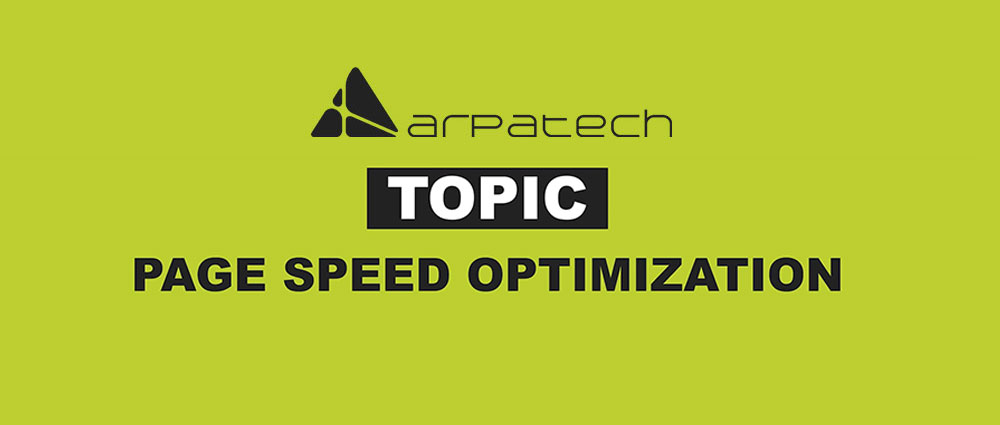Page Speed Optimization: Trends & Standards

Page speed optimization is the key factor that determines success for modern online businesses. Poor website performance ruins a company’s goodwill and undermines its reputation when the agony of waiting for slow web pages to load forces visitors to opt for alternatives.
What is Page Speed?
Page speed is the length of time it takes to show all the content on a certain page or the span of time it takes for a browser to collect a web server’s first. Every page component, i.e., its HTML code, CSS that styles page elements, several JavaScript files, pictures, videos and other multimedia and so much more, impacts the page speed.
Thanks to the differences in technology, page speed is gauged distinctly on desktop and mobile devices, with users finding the experience exciting.
Page Speed vs. Site Speed
From their nomenclatures, page speed and site speed look quite similar, but in fact they are quite different from each other. Site speed is the average of numerous model pages on a website, while page speed explains how long an individual will wait to begin using a specific page.
Why Page Speed is Important
For users, page speed is immensely important as swifter pages are more well-organized and provide a much better on-page user experience. According to a survey, if a page takes longer than 4 seconds to load, over a half of users will look the other way.
Speed is equally important for mobile users as well. The same survey showed that 75% of users reported visiting a website that didn’t load fast enough. Conversion rate is also greatly impacted by page speed. For example, a top American retailer Walmart observed a three percent rise with every second of increased page speed.
More significantly, page speed is also vital for search engine optimization (SEO).
In 2010, Google announced that page speed would be included as one of the ranking features for their search index. And a few years ago, the company announced they will give page speed even more attention, integrating mobile site speed to rank sites on its “mobile-first” pages, or pages that personalize rankings for mobile sites. The search engine behemoth also expanded the standing of the user experience by introducing Page Experience to its ranking signals.
Page experience gestures aim to assess web pages by the quality of their user experience for real people. Simply put, they expand Google’s recent on-page standards with features that impact the individual’s experience while using the content. In fact, page speed is one of the most important factors that influence it.
Page Speed Metrics
Page speed is a complex phenomenon. Therefore, to overcome any issues associated with it, it is important to comprehend how it is measured.
There are numerous metrics that impact or are relevant to page speed:
Load time: It describes how long it takes for a whole page to show in a browser’s window. It’s worth noting that for that to occur, all file and script must be loaded and all HTTP requests have to be satisfied.
Page size: It describes the overall size of all features — including code elements, scripts, images, and other files — a page comprises.
Time to First Byte (TTFB): It measures the time between a browser requesting the page and the first byte of the information is returned by the server.
Round Trip Time (RTT): It describes the time it takes for the complete request for information: from the moment the browser makes the request, to the time it takes to reach the server, and how long it takes for the response to return to the browser.
Factors that Slow Pages Down
With these convincing figures, you surely want to ensure your site is loading swiftly. Here are some of the factors that might decelerate your site’s speed.
Primarily, a heavy image page, particularly on sites with receptive or high DPI images, can load sluggishly. Enhancing images can make your website more lightweight; so can allocating them through a content delivery network (CDN) to render those files from location closer to where the user is.
Another problem happens if your web page has a number of large files that must be downloaded. Rendering too many JavaScript scripts might decelerate a page as well. A JavaScript compression or minimization tool reduces your download size. Another grave problem is rendering scripts too early or too late. Often, webmasters design their pages to be expended only after the whole content has been loaded.
Evaluating Page Speed
You may not be aware how users are dealing with your website if you don’t evaluate page speed. Google’s PageSpeed Insights allows you to see your pages’ load speed score, as well as giving you the aforementioned reasons that your page may not be loading as fast as it could be.
Nevertheless, the averages provided by these Google tools do not constantly paint a complete picture. A swift look provides valuable insights as you make the changes that Google’s PageSpeed insights suggests. You can do pre and post analysis and also correlate the changes to see if that led to a rise in traffic and conversion on your site.
However, one thing is crystal-clear: optimizing your page speed is essential for the future. And your entire focus should be on improving the speed of your web page.
Arpatech
Latest posts by Arpatech (see all)
- How to Choose the Right Software Development Company in Dubai - July 15, 2024
- Optimizing Last-Mile Delivery for E-Commerce Fulfillment: Top 4 Keys to Customer Satisfaction - July 9, 2024
- Best Tools And Resources For Startups – A Complete Guide - February 24, 2022

 Careers
Careers


